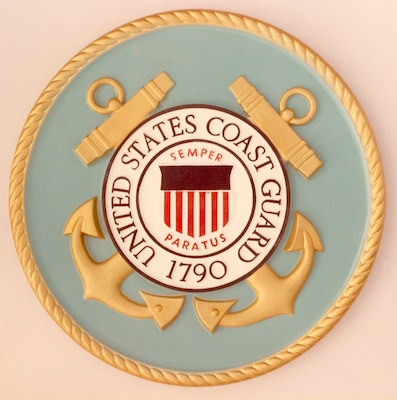Forsythia, 1943 (WAGL-63)
Jan. 8, 2021
Official USCG Seal
Forsythia, 1943
WAGL-63
An Asian shrub of the genus Forsythia, widely cultivated for its early-blooming yellow flowers.
Builder: Avondale Marine Ways, Westwego, Louisiana
Length: 114'
Beam: 26'
Draft: 5'
Displacement: 230 tons
Cost: $159,000
Commissioned: 15 February 1943
Decommissioned: 12 August 1977
Disposition:
Machinery: 2 Superior diesel engines; 360 BHP; twin propellers
Performance & Endurance:
Max: 10 knots
Cruising: 7.5 knots; 2,100 mile range
Deck Gear: 3-ton capacity boom; electric hoist
Complement: 24
Armament: None (small arms?)
Electronics: None
Tender History:
The United States tender Forsythia was one of three 114-foot river tenders built for the Coast Guard that were launched in 1941 and 1942: Dogwood (WAGL-259) , Forsythia (WAGL-63), and Sycamore (WAGL-268). They were designed to replace the aging stern-wheel steamers such as the Cottonwood and Wakerobin that were in service on the Mississippi River. The 114-footers were designed to be more versatile and less expensive to maintain, the latter being a Coast Guard priority. Their engines were replaced in the 1960s. They were designed to push a work barge that held buoys, other aids to navigation equipment, and a crane. Each was tasked with maintaining aids to navigation but also conducted flood relief, search and rescue, and law enforcement operations as well as pleasure boat safety boardings when needed.
The Forsythia was assigned to the 9th Naval District and was stationed at Sewickley, Pennsylvania, and used to tend aids to navigation for 426 miles on the Allegheny, Monongahila, and Ohio rivers to Dam 22. On 16 May 1963 she transferred to Memphis, Tennessee.
She was decommissioned on 12 August 1977.
Sources:
Cutter History File. USCG Historian's Office, USCG HQ, Washington, D.C.
Robert Scheina. U.S. Coast Guard Cutters & Craft of World War II. Annapolis, MD: Naval Institute Press, 1982.
Robert Scheina. U.S. Coast Guard Cutters & Craft, 1946-1990. Annapolis, MD: Naval Institute Press, 1990.